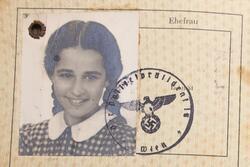The Forgotten History of 19th Century Black and Jewish Settlements in Western Kansas
In the late nineteenth century, Russian Jews and Black Americans settled in western Kansas to start a new life. Was it the promised land they imagined?
The Jews of New York didn’t want them: the nearly 40,000 destitute, uneducated, Yiddish-speaking Jewish refugees from the Russian Empire who arrived on the shores of the city in the early 1880s. The largely assimilated, secular American Jews feared their conservative Orthodox co-religionists would damage the reputation of the Jewish community and add to the already massive problems of poverty and unemployment in their city. But they felt sympathy for the refugees’ plight, recognizing the persecution and purging that had driven Jews out of countless places for centuries, most recently from Czar Alexander III’s Russia.
So, the American Jews of the East Coast set about helping the Russian immigrants settle in the United States—just not in their cities. Instead, Jewish leaders rallied their reluctant troops to form aid societies to support settlement elsewhere—in Kansas, to be exact. Thanks to the Homestead Act of 1862, land was widely available and cheap, provided a settler could prove five years of continuous residence and cultivation of the land in order to receive a final title. It was a risk the desperate refugees were willing to take. In July 1882, the first group of two dozen Russian Jewish families arrived in the first Jewish agricultural settlement in western Kansas, which they called Beersheba.
About 160 miles to the north was Nicodemus, Kansas, the first agricultural settlement of Black Americans west of the Mississippi. It was established five years earlier in 1877, the same year that the last US Army troops withdrew from Louisiana, marking an end to post-Civil War Reconstruction efforts in the South. Without federal troops in the South, white Southerners could curtail the rights and liberties of recently freed Black Americans, despite the ratification of the three new amendments to the US Constitution that supposedly guaranteed freedom and equal protection under the law. Lynchings, segregation, disenfranchisement, limited economic opportunity: this was the lot of Black Americans in the South in the 1870s. So, some six million of them left their homes. The ones who went West—it is estimated between 40,000 and 60,000 made the journey—were nicknamed “Exodusters,” traveling up the Mississippi and settling across Missouri and Kansas, from St. Louis, to my hometown of Kansas City, all the way to Nicodemus. It was there, in the home state of famed white abolitionist John Brown, that freedmen expected to find, as the New West Monthly wrote in 1899:
a school for every child;—a field to labor;
respect that sees in every man a neighbor; the richest soil a farmer ever saw
and equal rights to all before the law.
This isn’t the migration most people imagine when we think of Jewish immigration to the United States or of Black American migration to the North. We think of these groups moving to the big cities—New York, Philadelphia, Chicago—where they were surprised and saddened to find no less discrimination, if not exactly the same outright danger to their lives, than where they had come from. We can clearly name the source of that discrimination: white, Christian, Northern and Western European supremacy that expected assimilation of anyone different.
The West, however, was supposed to be a land of enterprise and individualism, of wilderness and freedom. It was supposed to offer opportunity for economic self-actualization and plenty of distance from the communities that had rejected the migrants. Was Kansas “the promised land” these Jewish and Black farmers thought it would be?
Not exactly. While there was land in western Kansas, it wasn’t very fertile; it was a part of the country sometimes called the “Great American Desert.” The homesteaders in Beersheba suffered from several years of particularly brutal blizzards, droughts, and tornadoes, not to mention isolation and disputes with the aid societies that had helped them settle in the first place. Due to these hardships, the Russian Jews’ settlement only lasted about four years. But this did not mean an end to Jewish settlement in the Midwest, for many were able to work enough to prove their claim per the Homestead Act, then sell the land to move elsewhere. Usually they moved to a city back east like Kansas City or Wichita, or further west to Denver, where they were no longer met with disdain but rather with opportunity. The Russian Jewish refugees had, as they say, pulled themselves up by their bootstraps.
In Nicodemus, the climate for farming was similarly infertile. When Willianna Hickman, an Exoduster from Kentucky, arrived in the town for the first time in 1878, having walked 30 miles from the closest railroad to reach it, she despaired, recalling, “The families lived in dugouts. The scenery to me was not at all inviting, and I began to cry.” But unlike Beersheba, the community thrived for several years. By 1881, the multiracial community had three hotels, two churches, two dry goods stores, a lumber yard, and a blacksmith shop. Its decline began in the 1880s due to poor harvest and declining investment, including when three major railroad companies passed over the town for a railroad station. The town still exists today, a mere shadow remaining of its prosperity since so many of its residents opted to try their luck in the cities, like the settlers of Beersheba did.
When the Black residents of Nicodemus wanted to relocate, however, they could not integrate like their white-passing Jewish counterparts. Historian Randall Woods found that in cities where Black residents made up more than seven percent of the population, Black residents were forced to live in a designated area of town. Black Kansans were excluded from most white-collar jobs and faced wrath from white laborers who believed their jobs had been stolen from them. True to American values of individualism and liberty that particularly thrived in the American West, white Kansans claimed to believe in the ability of all humans, regardless of race, to achieve material and moral growth. But the potential of parity eluded the Exodusters.
The fate of Eastern European Jews was thus different from the Black migrants. Russian Jews faced economic hardship, but thanks to the color of their skin, they enjoyed the privilege of avoiding segregation and exclusion. This privilege can be attributed to white supremacy, the very same force that had pushed them away when they arrived. In this story—one of many, many similar stories—the socially constructed nature of race and racial hierarchy is obvious.
Why am I writing about this on a blog intended to highlight the stories and voices of Jewish women? Because it’s all I, a white Jewish woman, can think about lately during a summer in which structural anti-Black racism has been on full display in the disproportionate impact of the coronavirus pandemic on Black and brown people and the compounding effect of police killings of Black people. And I’ve had lots of time to think. I think about the ways that my Jewishness makes me vulnerable to bigotry and discrimination, and the ways that my whiteness protects me from them. I think about what some are calling a “400-year head start” for white people in the United States, and the near impossibility of realizing the “American Dream” for anyone else. I think about how my home in the Midwest may not be the focus of discussions about American racism and discrimination, but regardless, it’s not immune to these symptoms of white supremacy that plague our country’s history and present. I think about how this land was never the homesteaders’ to claim in the first place, stolen from underneath the feet of Indigenous people who had lived there for millenia.
I’ve had time to think about the ways that I can translate my musings into tikkun olam, action to repair the physical and emotional agony this world and its people have endured, so that our future may hopefully see a different fate.








I like your “my Jewishness makes me vulnerable to bigotry and discrimination, and the ways that my whiteness protects me from them” idea. I am a white jewish women from Mexico City and I feel that way all the time.
Thanks for teaching me some American history.
(My brother in law is from Kansas City!)
Russian Jews faced economic hardship, but thanks to the color of their skin, they enjoyed the privilege of avoiding segregation and exclusion. Does the author really believe this? She needs to do more study if she thinks this is remotely true. Her article was interesting until she added the comments that are not true.